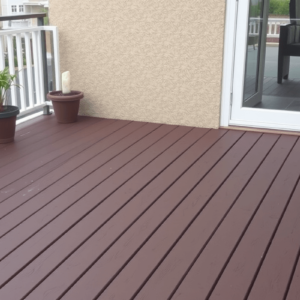Choosing the Right Snow Melt System for Your Composite Decking
Understanding the Importance of Choosing the Right Snow Melt System
When winter arrives, composite decks can face significant challenges from accumulated snow and ice. A well-chosen snow melt system can help prevent damage to your deck while ensuring safety for those who use it. However, selecting the right system requires careful consideration of several factors, including energy efficiency, installation complexity, maintenance requirements, and compatibility with different composite materials.
Evaluating Energy Efficiency
One of the primary considerations when choosing a snow melt system is its energy efficiency. An efficient system will not only reduce your utility bills but also minimize environmental impact. Look for systems that use advanced heating elements such as electric cables or hydronic tubing, which are known for their energy-saving capabilities. For instance, hydronic systems, which circulate heated water through pipes embedded in the deck, are often more efficient than electric systems. This is because they can utilize renewable energy sources like solar power for heating the water, thereby reducing reliance on non-renewable energy sources (Energy Saver).
Installation Complexity
The ease or difficulty of installing a snow melt system is another critical factor. Some systems may require professional installation due to their complexity, which can add to the overall cost. Electric cable systems are generally easier to install compared to hydronic systems, which typically need plumbing work and may involve more intricate setups. However, the choice should also depend on your level of DIY skills and the availability of professional services in your area. If you’re comfortable with electrical work and have access to the necessary tools, an electric cable system might be a viable option. Otherwise, consulting a professional installer is advisable.
Maintenance Requirements
Maintenance is an ongoing aspect of owning any snow melt system. Electric cable systems usually require less maintenance compared to hydronic systems, which may need periodic checks for leaks and flushing out debris from the pipes. Regular inspections and occasional cleaning are essential to keep the system running smoothly. Additionally, consider the warranty provided by the manufacturer; a longer warranty period can indicate higher reliability and lower long-term costs.
Compatibility with Composite Materials
Not all composite materials are equally compatible with every type of snow melt system. It’s important to choose a system that won’t compromise the integrity of your composite decking. Composite materials are made from a combination of wood fibers and plastic resins, and some systems might cause thermal stress leading to warping or cracking over time. Therefore, it’s crucial to select a system that has been tested for compatibility with various composite materials. Manufacturers often provide detailed guidelines on which systems are suitable for specific types of composites, so refer to these resources before making a final decision (Deck Magazine).
Conclusion
Selecting the right snow melt system for your composite decking involves balancing multiple factors such as energy efficiency, installation complexity, maintenance requirements, and material compatibility. By carefully considering each of these aspects, you can ensure that your chosen system will not only protect your deck but also enhance its longevity and functionality. Always consult with professionals and refer to manufacturer guidelines to make an informed decision.





Reviews
There are no reviews yet.